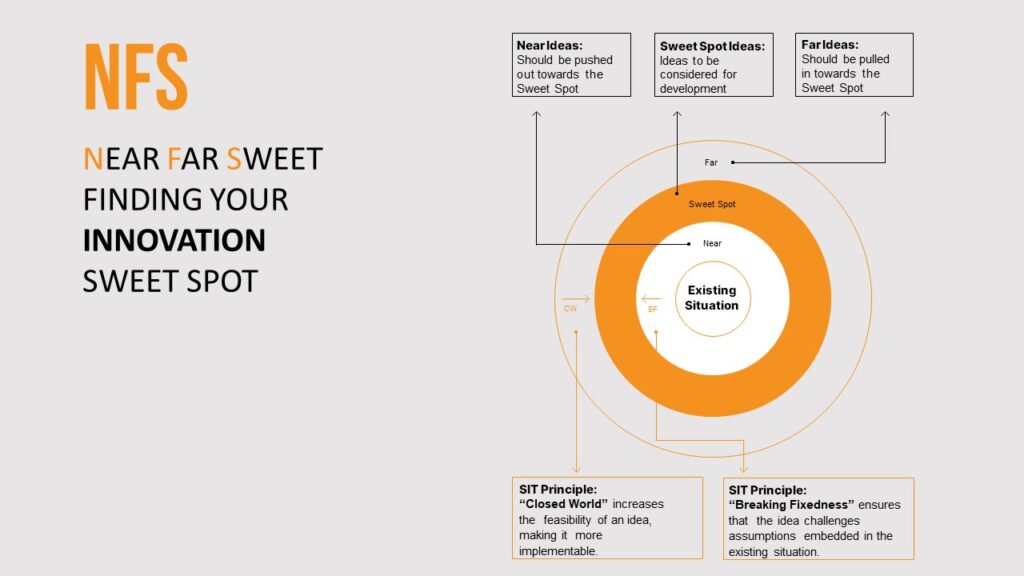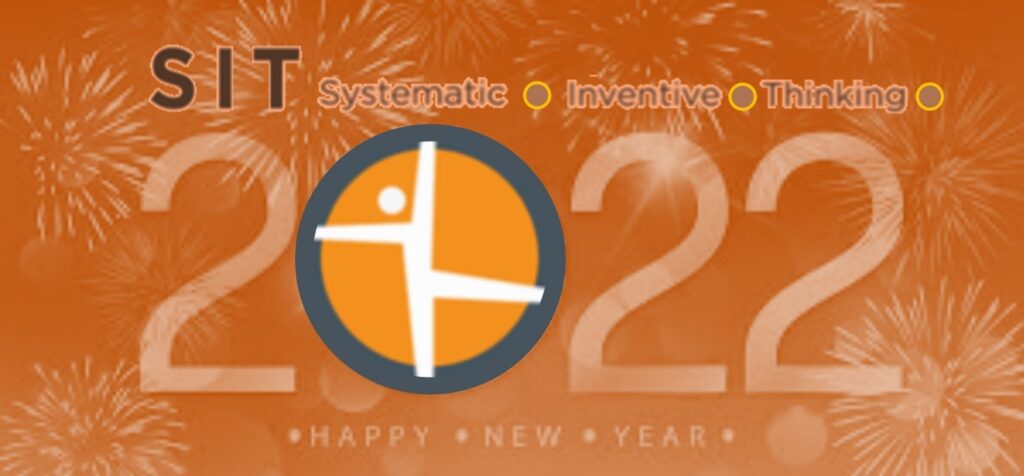Trigger warning: this post is a bit silly. It is silly for two reasons, that I will explain in the sentence after the next. But before that, I want to claim that although silly, it may be worth your while reading the post for one single reason: the simple tool that I describe here is very useful. But, granted, it is silly, because:
- It uses as an example the tired cliché of New Year’s resolutions;
- Like so many other pieces of good advice, it is simply a piece of your grandmother’s common sense, neatly packaged for contemporary use.
An interesting aspect of the tool I present here, which we call NFS, aka Near-Far-Sweet, is that it was derived by us from a concept presented in the context of education by the Russian sociologist Lev Vygotsky (1896-1934). The concept is called Zone of Proximal Development (ZPD) and it relates (apologies for the simplification) to the level of potential mental development of an individual (in the original context, a child).
Borrowing somewhat loosely from ZPD, observe the process of landing on the right New Year’s resolution when you wish, say, to get in better shape and hopefully shed some weight while you’re at it. These are two versions of an idea that you may come up with:
- Take the stairs up to your 3rd floor office every day;
- Go out for a 3-mile jog three times a week, and a 5-mile jog every weekend.
Common sense immediately indicates that option 1 is too weak, since climbing two flights of steps once a day or even twice doesn’t really keep you in shape (and even less so if you must first get into shape), while option 2 is very powerful and can probably lead to a dramatic change in your physical conditions. But, alas, the probability that you will stick to option 2 beyond the first two weeks of January are pretty slim, if you can even get yourself to launch the plan.
Ideas of the first type we call Near, the second, not surprisingly, Far, and those we are seeking, are labeled Sweet: What you need is a New Year’s resolution that is far enough from current practices to make a difference, but near enough that it can be viable to implement.

This is the Near-Far-Sweet (NFS) model we use to map out ideas. We often use this model when working with companies on creating their idea pipeline, following an ideation exercise. But, what should one do once ideas are mapped as N or F or S? How can this help in actually creating and implementing valuable ideas?
As part of his Zone of Proximal Development model, Vygotsky also introduced the concept of scaffolding. When we aim to lead a child to live up to their potential, how high should we set the bar? Too low, and we are not challenging them to go beyond the obvious. Too high, and they will probably end up frustrated and lose confidence. The Sweet Spot (mixing terminologies here) is a place in which – with the help of scaffolding – the child can reach the maximum level that their potential allows. In Vygotsky’s educational context, scaffolding very often takes the form of an older person, with the capabilities and motivations to accompany the child on her or his challenging journey to the higher reaches of their potential for development. In the context of product development, we propose that facilitation, with the proper structures, can do the scaffolding job.
Back to your New Year’s keep-in-shape resolution: perhaps not every single day but two or three times per week, and maybe 2 miles rather than 3 may be your Sweet Spot? Better figure it out before you make a commitment, and even this Sweet resolution will be more attainable if you enlist a personal trainer, or convince a friend and neighbor to join you and thus become each other’s scaffolding.
The next step after mapping your ideas, whether for leisure or work, is to turn your attention to the Ns and the Fs. When working on a pipeline of existing products or services:
- Near ideas are often created as variants on existing offerings. They thus tend to be easy to imagine, implement and also communicate to potential customers. But, given their similarity to known offerings, they seldom justify for the customer the cost of switching from their current practices. The objective, therefore, is to push the idea outwards, further away from the current version, and into the Sweet Spot. This can be done by applying tools that break mental fixedness about the current product.
- Far ideas are typically exciting for their intended customers, but lacking in a clear path to implementation. Or sometimes, even though they can deliver a strong benefit for the customer, it is hard to communicate clearly what this promise is. In these cases, we utilize the Closed World principle, focusing on resources that are already at our disposal that can help concretize the idea, make it easier to implement or assist in communicating its value.
Much of this is pretty obvious – remember, I warned you – but surprisingly overlooked more often than not, resulting in the following common mistakes:
- Coming out to market with unexciting ideas, and then lamenting that “80% of product launches fail”. Of course they fail, if what you offer is so more-of-the-same.
- Giving up on ideas because they’re perceived as not exciting enough in focus groups or other VoC gathering techniques, before giving them a chance by pushing them further out towards Sweet.
- Giving up on exciting ideas because they either seem to be impossible to realize, or fall by the wayside in the attempt, rather than insisting on making them viable.
- Trying to launch Far ideas, technically feasible but still out of scope for the imagination of existing potential customers, rather than pulling them inwards to the Sweet Spot.
- Settling for Near ideas out of fear or laziness, and then brainstorming wildly to produce Far ideas, to prove that you’re “innovating”. And a corollary:
- Claiming that “we don’t have a problem with ideas, we’ve got plenty of good ideas”, without noticing that this “plenty” is made of Near and Far ideas, with none in the Sweet Spot.
So, if you insist on making New Year’s resolutions, against all odds😊, maybe try some version of applying the NFS principle on yourself, your kids, your pipeline?
Happy New Year!

